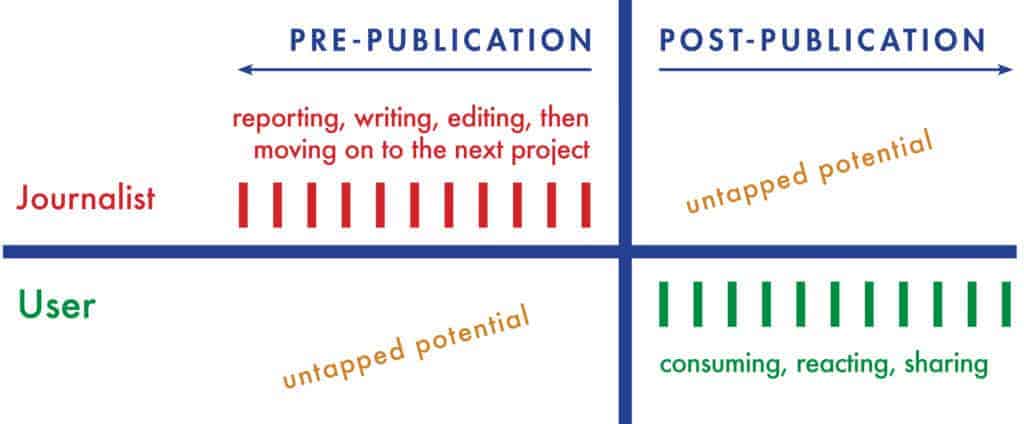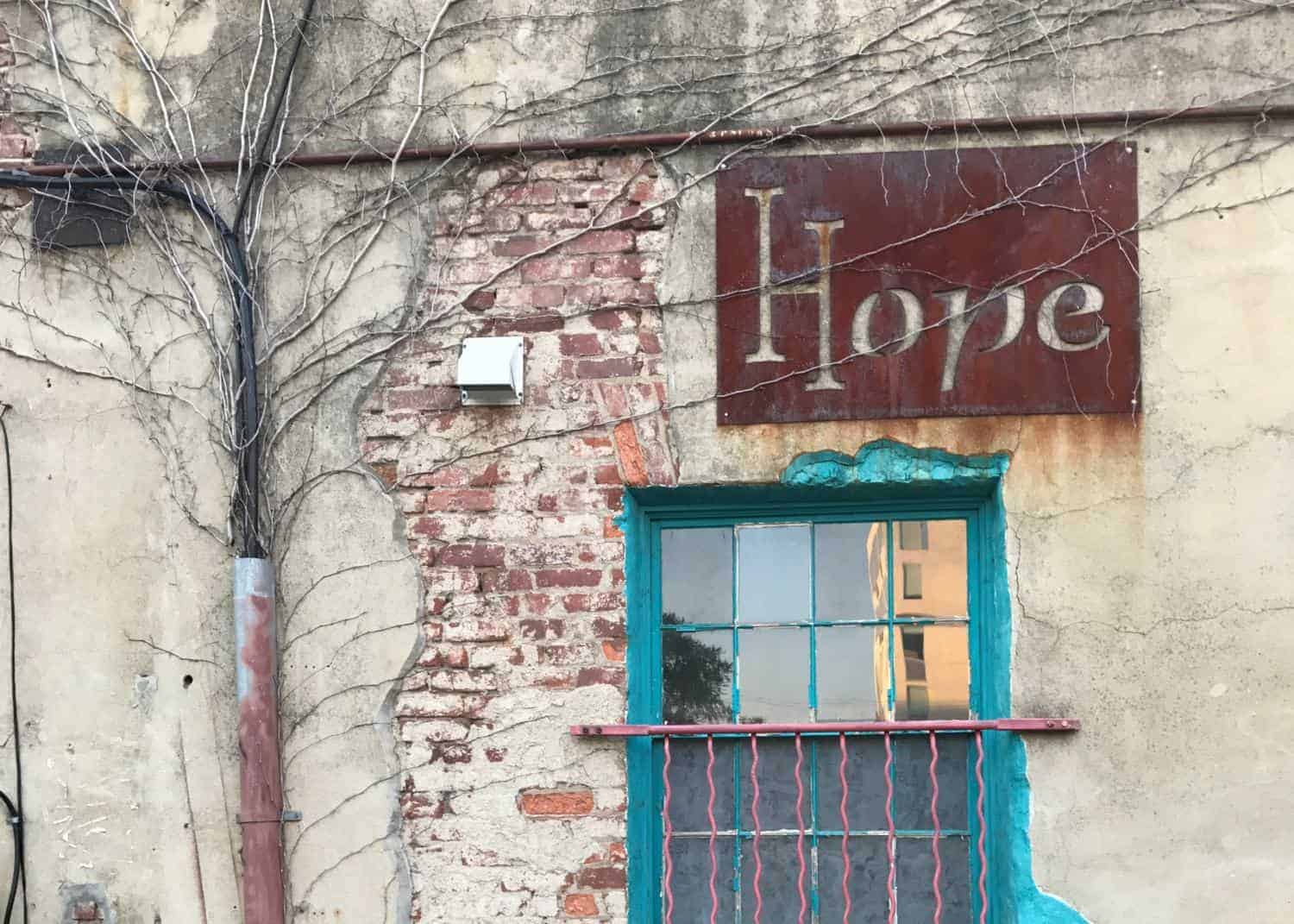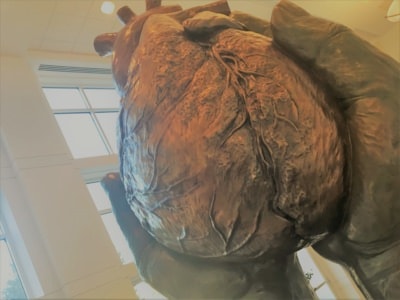

Megan White Hollander, a teacher-leader-reader, texted me on Friday, “Happy three year launch-a-versary to you and EducationNC!”
Thank you.
As we celebrate the beginning of year four of EdNC, thank you for being brave with us as we think about and build the toolbox we need to be innovative and make a difference. As we wrestle with the future of the media, education, and North Carolina, we are striving to assemble the tools — news + research + engagement — that even more people across our state will use to be informed and then inform others. Informing others is going to be more and more important going forward.
Leslie Winner, former executive director of the Z. Smith Reynolds Foundation, says our core focus from our inception has been and should continue to be making sure “all disparate leaders have a better understanding of what’s going on.” All disparate leaders — from students to teachers, from parents to school administrators, from community activists to elected officials, from new media to traditional media, from philanthropists to policymakers. All. And across all of our lines of difference — race and ethnicity, sexual orientation, rich and poor, old and young, urban and rural, conservative and liberal.
Here is our theory of change and our most recent annual report:
But for all of us, being in the know is changing. Mónica Guzmán, an award-winning journalist, has spent much of her career thinking about how to involve her audience in her work. In an article for the American Press Institute, “The best ways to build audience and relevance by listening to and engaging your community,” she writes:
People don’t just consume news today. They participate in it.
People have access to vast and varied information. They pursue news on their own time, and on their own terms, connecting with others who share and help satisfy their curiosity about their world.
This presents an opportunity for news publishers…. Now more than ever, journalists can engage their audiences as contributors, advisors, advocates, collaborators and partners.
This has been important to Nation Hahn and EdNC from our beginning as we met with people across our state and thought about what we call “the architecture of participation.”
Guzmán highlights this chart by Joy Mayer to illustrate the untapped potential of involving YOU in our work:


Guzmán notes correctly that it is easier for individuals than organizations to be focused on engaging audiences.
At EdNC, as individuals and as an organization, we strive to include you in our work every step of the way.
Nation says, “Each day, every day, we work to put the public at the core of all we do. It starts with listening, and then we figure out what to do with what we hear.”
Long before Facebook changed the algorithm for its news feed last week, we believed our most important metric was whether you share our work because that is how you inform others. Our 2017 annual report said, “We believe that the best measure of our work is when you do not just consume the information, but when you do something with it. Email it to a friend. Post it on your Facebook page. Start your own discussion. Tweet your reaction. Attend a meeting. Contact a policymaker. Write an article for us. Engage.”
We continue to build cutting-edge ways to distribute our content and to reduce our reliance on Facebook as a referral source, but Facebook still drives 22 percent of our traffic.
The industry caught up with us last week, and now more than ever we need you to share our work. As the graphic above indicates, we also need your input on the front end. Please let us know throughout the year what is going on in your schools and communities.


Over the course of the last year, Nation and our team built a suite of tools for our toolbox that we call Reach NC Voices. It is changing our craft.
You see our Reach NC Voices surveys embedded in our news stories. This allows us to identify sources. It allows us to discern public opinion and bring it to bear on public policy. It helps us decide the best places to go across the state to do in-depth reporting on an issue.
Our staff and their work are getting noticed nationally by Education Week, the Education Writers Association, the Center for Cooperative Media, and the News Integrity Initiative.
Our surveys are also changing qualitative research as we know it. When we go into communities across the state, we are able to convene focus groups of local leaders, surveying them about their perceptions of how issues play out in the lives of those they serve. Then we can send out surveys to people in the community and embed our surveys in local news sources to get a broader, public pulse on an issue. Then we can use our texting tools to distribute the surveys in schools or neighborhoods or to those served by a particular nonprofit or church to see how the issues actually impact people and their lives. This stratified, granular data about issues gives us a much more nuanced understanding of how issues play out in communities, and we believe this information will inform everything going forward from philanthropic investments to changes in public policy.
This year we will test all of the tools in our toolbox to shine a light on chronic absenteeism.
It is our privilege to do this work, and we are excited about 2018. In the spring, I will participate in the Aspen Institute’s Executive Seminar on Leadership, Value, and the Good Society. We hope to join a group of beginning teachers going to South Africa in June.
Perhaps most promising and exciting, tomorrow we launch a three-year study of equity across North Carolina on the National Day of Racial Healing. This week we roll out a series of short documentaries highlighting the work of four men of color across North Carolina, and we also lift up The Hunt Institute’s leadership and work on equity.


As Nation looked back through his notebook from his interviews this year, one quote stood out. In a conversation with Heather Strickland, who works with the North Carolina Partnership for Children, Inc., she asked,
“What does it mean for students to be ready for school? What does it mean for schools to be ready for their students?”
This year, we will be taking those questions one step further, asking,
“What does it mean to prepare our students for the world of work?”
The work of My Future NC and the Governor’s Commission on Access to Sound, Basic Education may set the stage for some bigger systems change as our state aligns what is happening in our classrooms with the needs of our economy in the future.
Governor’s commission sets out to implement Leandro findings
There are usually some surprises in any given year, but it is not too hard to predict the issues that will frame education policy on the national, state, and local level in 2018.
An Education Week article by Alyson Klein does a nice job of rounding up the federal issues, including federal funding, school choice, Deferred Action for Childhood Arrivals (DACA) and what happens to dreamers, the footprint of the U.S. Department of Education, federal legislation on career and technical education (CTE), the impact of Medicaid cuts, and what role education will have on the midterm elections. To kick off the new year, Education Week also published a special report on 10 Big Ideas in Education that is worth a look.
In North Carolina, a Joint Legislative Task Force on Education Finance Reform is considering how the state distributes education dollars to districts, tension continues between lowering K-3 class sizes and the ripple effects of doing so, and we expect another look at the principal pay schedule in the short session of the legislature.
Here and across the country, these issues are simmering:
Is our high school graduation rate inflated? As the rate in North Carolina has inched higher and higher to 86.5 percent statewide, a more careful look is warranted at how students are earning diplomas and the value of the diploma.
What are the strengths and weaknesses of the new federal law Every Student Succeeds Act, known as ESSA? This video by The 74 Million previews the challenges and opportunities:
Fit matters to parents, and the desire of parents to find the right “fit” for their child has fueled school choice. But with personalized learning, fit is changing and moving more and more to the classroom level and to the learning experience. Check out this website, Imagine.
They say, “Imagine will demonstrate that children, with personalized technology in their hands, can become literate and numerate with little to no adult instruction. More than 250 million children and youth worldwide do not have access to school. And hundreds of millions more go to school but never learn to read or write. We are partnering with organizations across the globe to pilot autonomous learning programs.” Like it or not, change is coming, and it is coming quickly.
In part to better understand how to turnaround schools that do not work well and in part to shape the future and what schools and schooling will look like, North Carolina continues to experiment with laboratory schools, restart schools, and the Innovative School District, among other models here and in other states.
Given the U.S. Supreme Court’s 2017 ruling in Endrew F. v. Douglas County School District Re-1, expect some positive changes in special education this year. The U.S. Department of Education issued this Q & A memo on the case on December 7, 2017:
There continues to be bipartisan interest in early childhood education, but with the emerging brain science, the debate is shifting a bit to return on investment (ROI) and whether investments make more sense for children age 0-2, 3-5, or K-third grade.
And our schools will continue to struggle with moving from equality to equity. This year, across our state and our country, schools and school districts are examining and re-examining school discipline, teacher diversity, desegregation and resegregation, social-emotional learning as a response to adverse childhood experiences (ACEs), health determinants, and other aspects of this important issue.


As EdNC is out and about across North Carolina, increasingly you will see us taking the time to learn more about the communities we visit. Our students live in these communities. Our teachers reside in these communities. Our schools exist within these communities. We have learned that if we want to understand education policy and politics in North Carolina, we need to take the time to understand the local context. We will be stopping by churches, visiting community colleges, and getting to know the businesses that drive local economies.
Recently I stopped at B’s BBQ in Greenville. B’s sells out of BBQ almost everyday, and it is such a community landmark that it has its own street. As I stood in line, I started talking with the young woman next to me. She started by teaching me how to order ribs, but our conversation shifted quickly to where she grew up, where she went to school, and where she works now. Our conversation helped me understand how she thinks about her role in the community. Next thing you know, Nation will have the iced tea cups in BBQ joints statewide printed with a question and a way to text into Reach NC Voices.
Below you can see the personal and professional development we are offering our staff to get to know northwestern North Carolina this year. Please share your photos and stories with us so we can learn from you, better understand the issues, and think about how they play out differently in communities across our state.
#loveNC
Thank you for your support of our students, our schools, our state, and our future.
Choose your own adventure: Northwestern North Carolina
Hikes
Flat Top Tower, Moses Cone Carriage Trails: https://www.nps.gov/blri/planyourvisit/moses-cone-trails.htm
MacCrae Peak, Grandfather Mountain, admission is $20: http://www.grandfather.com/wp-content/uploads/2012/09/Trail-map.pdf
Blue Hole, no public access: http://www.powderhornmountain.com/adobe/PHM_Large_Trail_Map_2-28-11.pdf
Hebron Rock Colony Falls: https://blueridgeinsider.wordpress.com/2012/05/28/hiking-trails-swimming-holes-hebron-colony-falls/
Tanawha Trail, 13.5 miles: https://www.nps.gov/blri/planyourvisit/tanawha-trail.htm
Culture/Recreation
Merlefest, 3 day general admission is $145, tickets on sale now, http://merlefest.org/purchase/
Ben Long’s Ashe County Frescoes, Holy Trinity Episcopal Church in Glendale Springs and St. Mary’s Episcopal Church in West Jefferson, the churches are open 24 hours a day for meditation: http://phc.diocesewnc.org/, http://www.ashefrescoes.org/churches.php
ASU Home Football Game: http://www.fbschedules.com/ncaa-18/2018-appalachian-state-mountaineers-football-schedule.php
Rock Dimensions, rock climbing in Pisgah National Forest, $90: http://www.rockdimensions.com/full-day-climbing/
Tweetsie’s 4th of July Fireworks, watch for free from the Blue Ridge Parkway: https://tweetsie.com/special-events/fireworks-extravaganza/
Ziplining at Hawksnest: https://hawksnestzipline.com/
Educational
Doc’s Rocks, ore buckets between $12-$55: http://www.docsrocks.net/our_services
ASU Dark Sky Observatory, https://dso.appstate.edu/public-access
Drive the Blue Ridge Parkway, including the Viaduct: http://www.blueridgeparkway.org/v.php?pg=873
Visit the Mast General Store in Valle Crucis, enjoy a bottled drink on the back porch: https://www.mastgeneralstore.com/cms/index.cfm/visit/valle-crucis/
In the know
Identify Rhododendron and Mountain Laurel, taste Sourwood honey, find out what rime ice and ramps are, catch a salamander (North Carolina has more than 60 species of salamanders, more than any other state).
Best place to camp:
Camp at Julian Price Campground: https://www.nps.gov/blri/planyourvisit/julian-price-park-mp-297.htm






